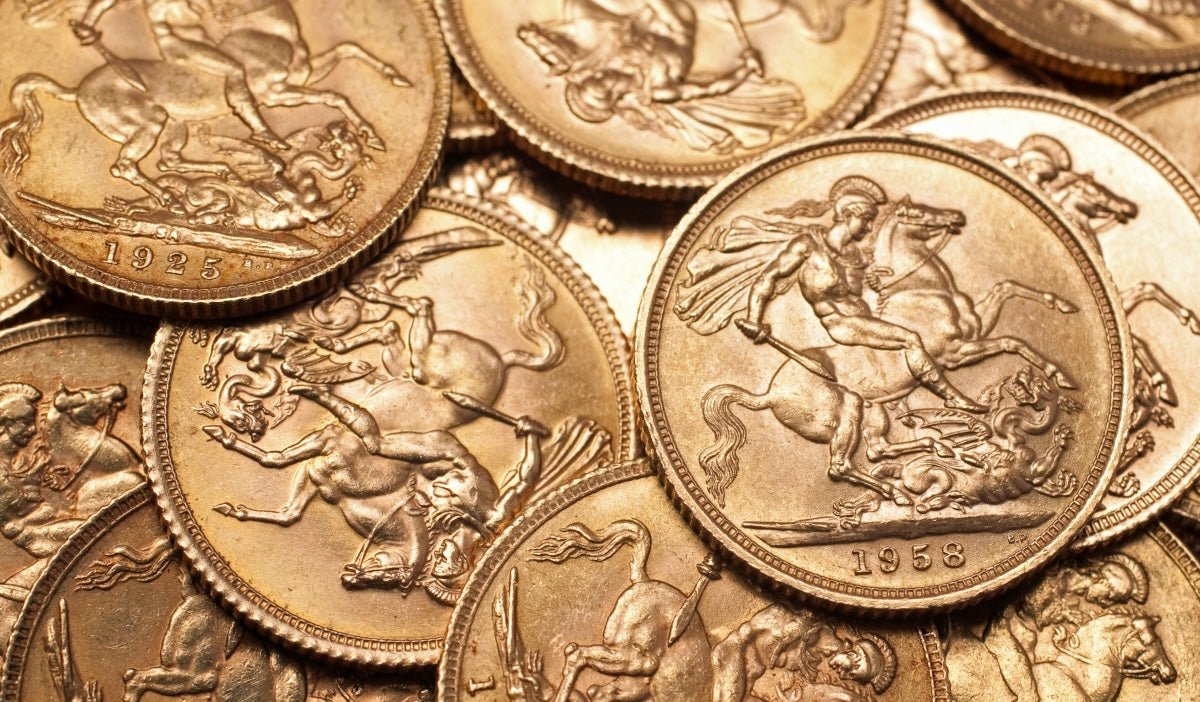The Fascinating History of Gold Coins Through the Ages

Les pièces d'or, issues d'une histoire millénaire, ont débuté au VIIe siècle avant J.-C. en Lydie, aujourd'hui la Turquie. Utilisées pour faciliter le commerce, elles sont vite devenues des symboles de richesse et de pouvoir à travers les civilisations grecque, perse, et romaine. Au fil des siècles, elles ont évolué, notamment avec le célèbre florin au Moyen Âge et les pièces de l'étalon-or au XIXe siècle. Aujourd'hui, elles représentent un placement sûr et un objet de collection prisé, alliant valeur historique et sécurité financière.
Origins of Gold Coins
Gold coins have a rich and fascinating history dating back several millennia. The first gold coins appeared in the 7th century BC in Lydia, a region in present-day Turkey. King Croesus is often credited with the invention of gold coins, using this precious metal to facilitate trade and standardize transactions.
These early gold coins were made from a natural alloy of gold and silver called electrum. They bore symbols and inscriptions representing the issuing authority, guaranteeing their weight and purity. This helped increase trust in commercial transactions.
The use of gold coins quickly spread throughout the ancient world. The Greeks, Persians, and Romans all adopted this means of payment. Each civilization contributed its own designs and inscriptions, reflecting their culture and power. Gold coins thus became symbols of wealth and power, used not only for trade but also as a way to demonstrate the prosperity and greatness of nations.
Evolution of Gold Coins Over the Centuries
Over the centuries, gold coins have evolved in terms of manufacture, design, and use. During the Middle Ages, gold coins became more standardized and their production more sophisticated. Kings and emperors used gold coins to establish their authority and finance their kingdoms.
One of the most famous gold coins of this era is the Florentine florin, introduced in the 13th century. The florin quickly gained popularity and became a benchmark for gold weight and purity. It was adopted by many European cities and nations, facilitating international trade.
With the discovery of the New World and the influx of gold from the Americas, Europe experienced an explosion in gold coin production. Spanish gold coins, such as the famous doubloon, played a crucial role in the global economy of the time. These coins circulated widely, strengthening international trade and the accumulation of wealth.
With the abandonment of the gold standard in the 20th century, gold coins lost their central role in everyday transactions. However, they retained their appeal as investments and collectibles. Modern gold coins are often minted by governments for investors and collectors, guaranteeing their weight and purity.
Iconic Gold Coins and Their Value Today
Certain gold coins have become iconic and continue to attract the attention of investors and collectors. Their history, rarity, and unique design contribute to their value.
The South African Krugerrand, introduced in 1967, is one of the most famous gold coins in the world. It was designed to promote the South African gold market and facilitate gold investment. Today, the Krugerrand remains popular among investors for its purity and liquidity.
The Canadian Maple Leaf, launched in 1979, is another iconic gold coin. Produced by the Royal Canadian Mint, it is known for its 99.99% purity. The Maple Leaf is prized for its elegant design and high quality, making it a popular choice among investors and collectors.
American gold coins, such as the Saint-Gaudens Double Eagle, are also highly sought after. Designed by the renowned sculptor Augustus Saint-Gaudens, this coin is often considered one of the finest ever produced. Its value often exceeds the price of gold due to its rarity and historical significance.
For those interested inpurchasing gold coins, it is crucial to choose authentic and certified coins. Modern gold coins, such as the Austrian Philharmonic and the British Britannia, offer security and purity guaranteed by their respective issuers.
By investing in iconic gold coins, you not only benefit from the value of gold, but also from the potential for appreciation due to their rarity and continued demand. Gold coins can also be an excellent way to diversify your portfolio and protect your assets against inflation and economic uncertainty.
For those who wish to diversify their investments even further,purchasing gold barsmay be an option. Bars offer standardized purity and are often more practical for larger investments.
Gold coins continue to fascinate with their history and beauty. Whether you're an investor looking to protect your wealth or an avid collector, gold coins offer lasting value and invaluable cultural richness. By understanding their history and evolution, you can better appreciate their importance and value in the modern world. To buy or sell gold, visit our dedicated page on selling and buying gold.



 Gold Bars
Gold Bars
 Rare Gold Coins
Rare Gold Coins
 Modern Gold Coins
Modern Gold Coins
 Best Sellers
Best Sellers
 French silver coins
French silver coins
